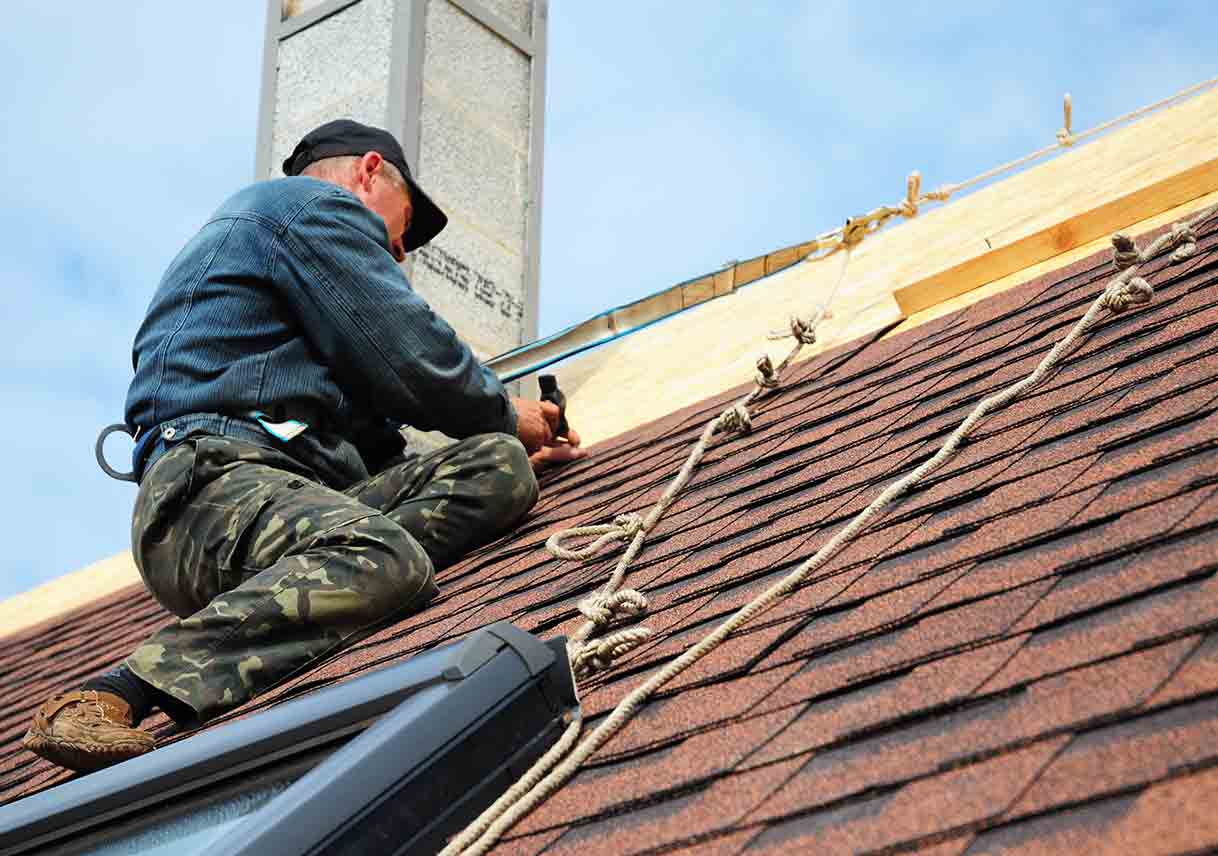Roofers inspect, restore, and mount roofs for houses. Roofing work can be physically challenging, as it requires heavy lifting, scaling, bending, and kneeling, often in scorching weather.
People who want to start a career in roofing will have to follow a formal apprenticeship training program, which is the essential educational qualification needed.
Roofers can work overtime to complete a specific job, particularly during busy summer months. Read further to learn more about roofing and how to become a licensed roofer.

Job Description: What Do Roofers Do?
Roofers mask the roofs of shingles, slate, concrete, copper, wood, or similar materials. They also spray roofs, sidings, and walls with bonding material, sealing, insulating, or soundproofing parts of structures.
They also inspect problem roofs to assess the appropriate repair techniques and clear snow, water, or debris from rooftops before adding roofing materials.
Roofers set up scaffolding to provide secure access to roofs and estimate the materials and labor needed to complete roofing work. They may specialize in tiling or installing new roofs, fixing existing roofs, or removing and replacing old roofs.
Roofing is divided into the following categories.
- Roof Tiler – Works with clay tiles, stone slates, or wood shingles and overlaps the tiles in successive layers to form waterproof roofs.
- Steel Roof Plumber – Works with concrete, polycarbonate, fiberglass, method glass sheets, and waterproof membranes.
- Metal Roof Plumber – Mount roof panels, insulation, gutters, downpipes, rainwater tanks, pumps, and roof plumbing systems.
Education & Training to Become a Roofer
There are no clear training standards for roofers. The majority of on-the-job programs consist of training in which skilled employees teach new workers how to use roofing devices, machinery, machines, and materials.
Beginner activities for trainees include carrying equipment and materials and erecting scaffolds and hoists. They learn how to calculate, cut, and install roofing materials within 2 or 3 months.
Afterward, they demonstrate how to lay asphalt or fiberglass shingles. Since certain roofing materials, such as solar tiles, are used infrequently, it may take several years to gain thorough experience with roofing.
Certification & License: How to Apply
Becoming a licensed roofing contractor is an excellent way to prove to your customers that you are competent and professional with your work.
The training and experience you receive allow you to be more confident and competent in your job, but certification will make you even more appealing to potential customers.
There are no national certification programs since each state sets out its own standards and runs its own certification programs. Many of the criteria are identical from state to state, allowing you to start the process of being certified immediately.
Steps to Become a Licensed Roofer
- Work with a roofing company or contractor. Certification is required for qualification everywhere you go. If you are unfit to be a roofing contractor, you will find out during your job period, saving you time and money.
- Find the certification requirements in your region. The employer may guide you to resources, or you can find them through the ‘Contractor License Information Page’ provided in the ‘Resources’ section of this article.
- Provide research guides and a contractor’s test report. There are several outlets for research guides. Some states may give them on their exam website or refer to examples on the Contractor’s License website.
The average annual salary for licensed roofers is $42,100. The median pay is the salary at which half of the workers working are paid more than that amount and half are paid less. The bottom 10% earned less than $26,540, and the highest 10% earned more than $70,920.
Job & Career Outlook
The job of roofers is expected to rise by 12% over the next 10 years, higher than the average for all occupations. The removal and repair of roofs and the construction of new roofs would create demand for roofers.
Roofs degrade faster than most other parts of buildings and need to be replaced or fixed more frequently. Demand for roofers would be motivated by the need to repair and replace roofs in existing buildings.
In addition to maintenance and repair work, it is expected that installing roofs on new buildings would contribute to job growth—some demand for roofers arises from the installation of solar photovoltaic panels on rooftop buildings.

Conclusion
Roofers’ demand is less susceptible to downturns than the market for other construction jobs. A lot of roofing work consists of repair and reroofing, in addition to new construction.
Still, workers may face periods of unemployment when the total level of new construction declines, and there may be a shortage of jobs in some places during peak times of building.
Also read – Start A Career Flipping Houses
